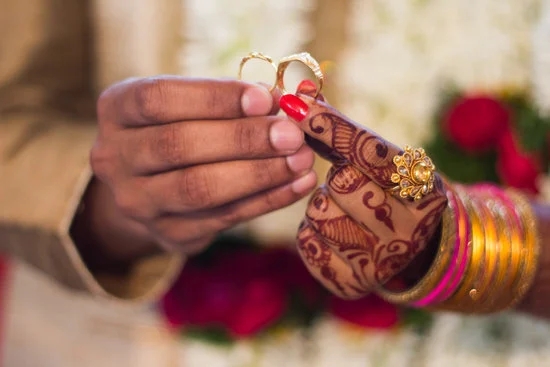Wire wrapped jewelry has a rich and intriguing history that has captivated artisans and jewelry enthusiasts alike for centuries. The art of creating intricate designs using wire dates back to ancient civilizations, with evidence of wire wrapped jewelry found in archaeological excavations across the globe.
From its humble beginnings to its modern-day popularity, the evolution of wire wrapped jewelry techniques has been influenced by different cultures and artistic movements, giving rise to an array of stunning pieces that continue to captivate our imagination.
The history of wire wrapped jewelry is a testament to human creativity and ingenuity, with ancient origins that span across various civilizations. From the elaborate designs of ancient Egypt to the intricate wire work of Celtic tribes, the art of shaping and adorning metal wires with gemstones and crystals has been cherished throughout history. Over time, this age-old tradition has evolved, incorporating new techniques and materials while still preserving the essence of craftsmanship and creativity.
Throughout the ages, different cultures have left their mark on wire wrapped jewelry, each contributing unique styles and techniques that have enriched the art form. Today, wire wrapped jewelry continues to thrive as a timeless expression of beauty and creativity.
In this article, we will explore the fascinating journey of wire wrapped jewelry from its ancient origins to its place in modern times, as well as the significance of gemstones and crystals in these exquisite creations. Join us as we delve into the captivating world of wire wrapped jewelry and discover its enduring allure.
Ancient Origins of Wire Wrapped Jewelry
The history of wire wrapped jewelry dates back to ancient times, with evidence of wire wrapping techniques found in artifacts from various civilizations. One of the earliest known examples of wire wrapping can be traced back to ancient Egypt, where intricate wire wrapped jewelry pieces have been discovered in tombs and archaeological sites. These early examples showcase the meticulous craftsmanship and creativity of ancient artisans who used simple tools to manipulate wire into beautiful adornments.
In addition to ancient Egypt, other cultures such as the Celtic and Viking civilizations also practiced the art of wire wrapping, creating stunning pieces that reflected their artistic traditions and symbols. The Celts, in particular, are known for their intricate knotwork designs that were often incorporated into wire wrapped jewelry, showcasing a blend of symbolism and skilled craftsmanship.
Furthermore, the use of wire wrapping techniques was not limited to jewelry making alone; it was also utilized in creating decorative items, amulets, and ceremonial objects. This highlights the importance of wire wrapping as a versatile and enduring artistic practice that transcended cultural boundaries.
Overall, the ancient origins of wire wrapped jewelry demonstrate its enduring appeal and significance throughout history. The influence of different civilizations and their unique aesthetic traditions has contributed to the evolution and diversity of wire wrapping techniques, laying the foundation for its continued relevance in modern times.
| Wire Wrapped Jewelry Origins | Description |
|---|---|
| Ancient Egypt | Intricate wire wrapped jewelry found in tombs and archaeological sites. |
| Celtic and Viking Civilizations | Utilized wire wrapping techniques to create stunning pieces reflecting their artistic traditions. |
| Decorative Items & Ceremonial Objects | Wire wrapping used beyond jewelry making for creating amulets, decorative items and ceremonial objects. |
Evolution of Wire Wrapped Jewelry Techniques
The art of wire wrapped jewelry has a long and rich history, with techniques evolving over centuries to create stunning pieces of wearable art. The evolution of wire wrapped jewelry techniques has been a journey of innovation and creativity, resulting in the diverse styles and designs we see today. From simple twisted wire designs to intricate weaving and wrapping techniques, the evolution of wire wrapped jewelry has been influenced by cultural, technological, and artistic advancements.
One of the earliest known examples of wire wrapped jewelry dates back to ancient Egypt, where artisans used gold wires to create ornate pieces adorned with precious gemstones. Over time, these techniques spread to other civilizations such as the Greeks and Romans, who further developed the art form by incorporating their own design aesthetics and materials. As metalworking techniques advanced, so did the possibilities for creating more elaborate and complex wire wrapped jewelry.
In the medieval period, wire wrapped jewelry saw a resurgence as artisans used silver and other metals to craft intricate pieces for nobility. The Renaissance period also played a significant role in the evolution of wire wrapped jewelry techniques, with artists experimenting with new forms and incorporating symbolism into their designs.
This era laid the foundation for many of the weaving and wrapping techniques still used in modern wire wrapped jewelry. Today, artists continue to push the boundaries of traditional techniques by combining different metals, incorporating alternative materials, and developing new ways to manipulate wire into breathtaking creations.
| History Period | Wire Wrapped Jewelry Techniques |
|---|---|
| Ancient Egypt | Gold wires used to create ornate pieces adorned with gemstones. |
| Greek & Roman Civilizations | Further development of the art form by incorporating new design aesthetics and materials. |
| Medieval & Renaissance Periods | Resurgence in popularity; experimentation with new forms; incorporation of symbolism into designs. |
Influence of Different Cultures on Wire Wrapped Jewelry
Wire wrapped jewelry has been influenced by various cultures throughout history, each leaving its mark on the craft and design of these unique pieces. From ancient civilizations to modern societies, the art of wire wrapped jewelry has evolved and been shaped by different cultural influences.
Ancient Cultures
Ancient civilizations such as the Egyptians, Greeks, and Romans were known for their intricate metalwork and jewelry designs. The use of wire wrapping techniques can be traced back to these early societies where artisans would skillfully weave and manipulate wire to create stunning adornments. These ancient cultures valued the use of precious metals and gemstones, contributing to the significance of these materials in wire wrapped jewelry.
Eastern Influence
In Eastern cultures such as India and China, intricate wire wrapping techniques have been used for centuries to create elaborate pieces of jewelry. The delicate artistry of these designs often incorporates symbolism and spiritual significance, with traditional motifs and materials reflecting the rich cultural heritage of these regions.
Native American Traditions
The Native American tribes have a long history of creating beautiful wire wrapped jewelry using natural materials such as stones, shells, and animal bones. These pieces often hold deep cultural meanings, serving as symbols of status, spirituality, or tribal identity. The unique style and craftsmanship of Native American wire wrapped jewelry continue to influence contemporary artists today.
Throughout history, different cultures have contributed to the diverse styles and techniques found in wire wrapped jewelry. Each cultural influence has added depth and richness to this art form, ensuring that it remains a cherished tradition across the globe.
Wire Wrapped Jewelry in Modern Times
Wire wrapped jewelry has a rich and diverse history, with evidence of its existence dating back thousands of years. The ancient origins of this craft can be traced back to the civilizations of Mesopotamia, Egypt, and Rome, where wire wrapped jewelry was created using simple tools and techniques. However, it wasn’t until the 20th century that wire wrapped jewelry gained popularity in modern times.
In modern times, wire wrapped jewelry has become a popular form of artistic expression and personal adornment. With the rise of social media and online marketplaces, amateur and professional jewelry makers alike have been able to showcase their unique creations to a global audience. This has led to a renewed interest in the craft, as well as the development of new techniques and styles.
The internet has also made it easier for enthusiasts to access resources and tutorials on wire wrapping, leading to an influx of new practitioners entering the craft. Online communities and forums dedicated to wire wrapped jewelry have formed, allowing individuals to share their work, seek advice, and learn from one another. This sense of community has helped maintain the tradition of wire wrapped jewelry while also encouraging innovation and experimentation.
- Modern Tools Used in Wire Wrapping
- Popular Styles and Techniques in Modern Wire Wrapped Jewelry
- Impact of Technology on the Production and Marketing of Wire Wrapped Jewelry
Famous Wire Wrapped Jewelry Artists and Their Contributions
Wire wrapped jewelry has a rich history and has been shaped by the contributions of famous artists throughout time. These artists have harnessed their creativity and expertise to create stunning pieces that have left a lasting impact on the world of jewelry making.
Ancient Wire Wrapped Jewelry Artisans
The art of wire wrapped jewelry can be traced back to ancient civilizations, where skilled artisans used basic tools to manipulate wire and create intricate designs. Some of these early jewelry makers included the ancient Egyptians, Greeks, and Romans who used wire wrapping techniques to embellish their jewelry with gemstones, creating pieces that were not only visually appealing but also held spiritual and symbolic significance.
Modern Pioneers in Wire Wrapped Jewelry
In recent history, there have been several influential artists who have elevated wire wrapped jewelry to new heights. One notable figure is Preston Reuther, known for his innovative use of wire weaving techniques and incorporation of unusual materials. Another prominent artist is Nicole Hanna, who has gained widespread recognition for her unique approach to wire wrapping, using intricate designs and incorporating a diverse range of gemstones into her pieces.
Contemporary Contributions
Today, contemporary artists continue to push the boundaries of wire wrapped jewelry, combining traditional techniques with modern materials and aesthetics. Artists such as Sarah Thompson and Oxana Crafts are known for their exceptional craftsmanship and unique design sensibilities. Their contributions to the field have helped redefine what is possible within the realm of wire wrapped jewelry, inspiring new generations of artisans to explore this timeless art form.
Significance of Gemstones and Crystals in Wire Wrapped Jewelry
Gemstones and crystals have been an integral part of wire wrapped jewelry throughout history, adding both aesthetic beauty and metaphysical significance to the pieces. These precious stones are often believed to possess healing properties and spiritual meanings, making them a popular choice for wire wrapping artisans.
The significance of gemstones and crystals in wire wrapped jewelry can be seen in the use of specific stones for their perceived benefits. For example, amethyst is often associated with calming energies and emotional balance, while citrine is believed to bring success and abundance. This belief in the power of gemstones has fueled the popularity of wire wrapped jewelry adorned with these stones, as wearers seek not only beauty but also the potential positive effects of these natural elements.
In many cultures, different gemstones hold specific meanings and are used in traditional practices such as healing rituals, ceremonies, or spiritual offerings. The use of these stones in wire wrapped jewelry reflects a deep connection to ancient traditions and beliefs. Whether it’s the use of turquoise by Native American tribes or jade by Chinese culture, each gemstone carries with it a rich history and symbolic significance that adds depth to the art of wire wrapping.
The crafting process of wire wrapped jewelry also plays a role in highlighting the significance of gemstones and crystals. Artisans carefully select each stone for its color, shape, and energy, then intricately wrap wires around them to create unique designs that showcase the natural beauty and symbolism of the gems. This attention to detail brings forth not only beautiful jewelry but also pieces that hold deep meaning for those who wear them.
The Future of Wire Wrapped Jewelry
In conclusion, the history of wire wrapped jewelry is rich and diverse, with its ancient origins dating back to civilizations such as the Egyptians, Romans, and Greeks. Throughout history, the techniques and styles of wire wrapped jewelry have evolved, influenced by different cultures and artistic movements. Today, wire wrapped jewelry continues to captivate enthusiasts with its intricate designs and use of gemstones and crystals.
Looking ahead, the future of wire wrapped jewelry holds exciting possibilities in terms of trends and innovations. As more artisans experiment with new materials and techniques, we can expect to see a fusion of traditional wire wrapping with modern elements. From incorporating unconventional materials to embracing sustainable practices, the evolution of wire wrapped jewelry is sure to reflect the values and lifestyles of contemporary society.
Furthermore, the rising interest in ethically-sourced gemstones and crystals is expected to shape the future of wire wrapped jewelry, as consumers become more conscious about the origins and environmental impact of their accessories. With an emphasis on sustainability and ethical sourcing, the future trends in wire wrapped jewelry are likely to align with a growing demand for transparency and eco-friendly practices within the industry.
As such, it is evident that while honoring its historical roots, wire wrapped jewelry will continue to evolve as a vibrant art form that adapts to the changing tastes and values of society.
Frequently Asked Questions
What Is the History of Wire Jewellery?
The history of wire jewelry dates back to ancient times when people used wire to create decorative and functional items. It has been found in various cultures, including the Egyptians, Greeks, and Romans, who crafted intricate wire jewelry for personal adornment.
How Old Is Wire Wrapping?
Wire wrapping is an ancient technique that has been around for thousands of years. It is believed to have originated in Mesopotamia around 2000 BC. Historically, it was used to create jewelry and other decorative items by bending and shaping metal wires.
What Is Wire Wrapped Jewelry?
Wire wrapped jewelry involves using various gauges and types of wire to encase or decorate stones, beads, or other focal points. The artist uses pliers and other tools to manipulate the wire into intricate designs, creating a unique piece of wearable art. This technique allows for endless creativity and individual expression in jewelry making.

Welcome to my jewelry blog! My name is Sarah and I am the owner of this blog.
I love making jewelry and sharing my creations with others.
So whether you’re someone who loves wearing jewelry yourself or simply enjoys learning about it, be sure to check out my blog for insightful posts on everything related to this exciting topic!





